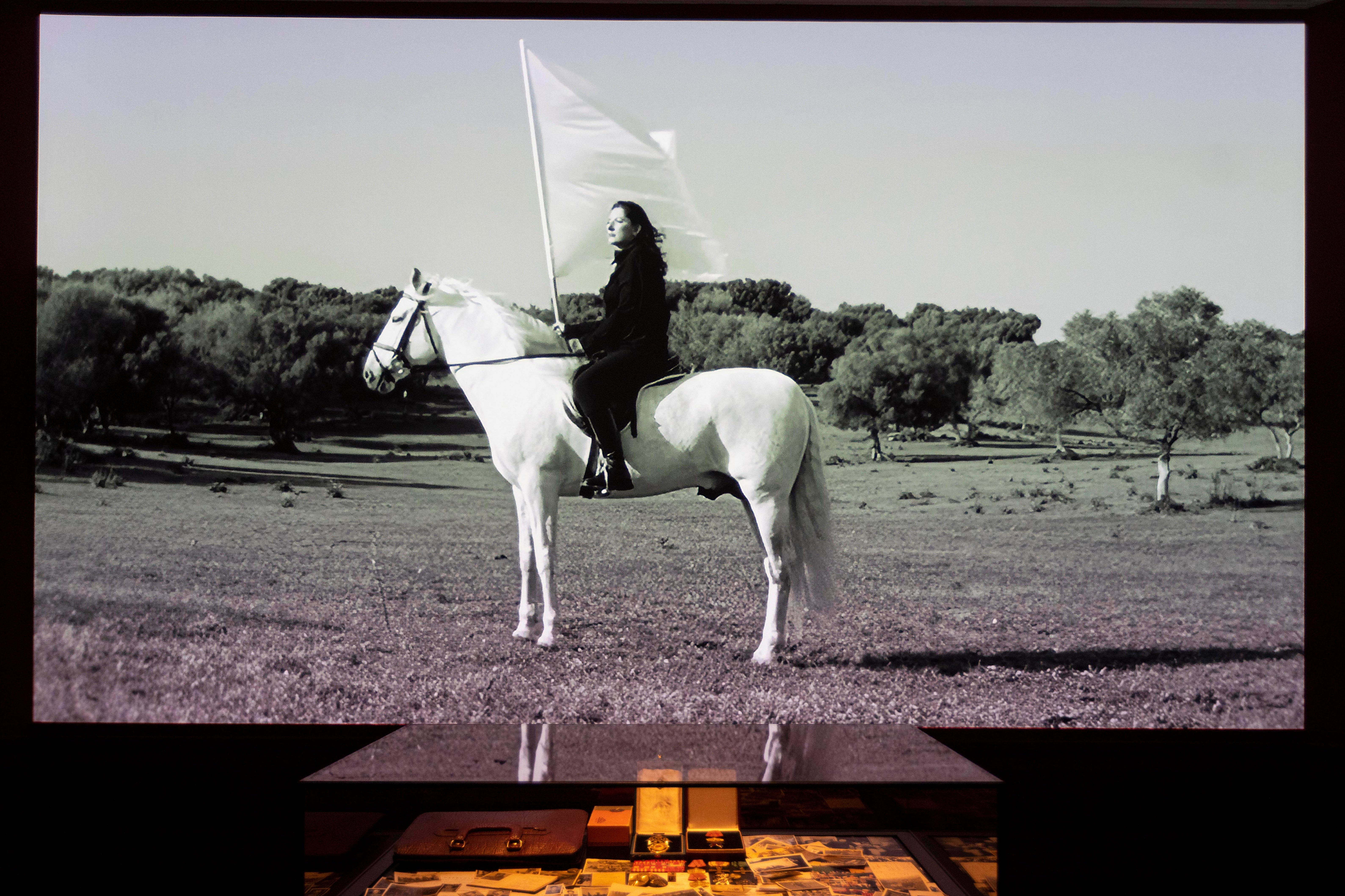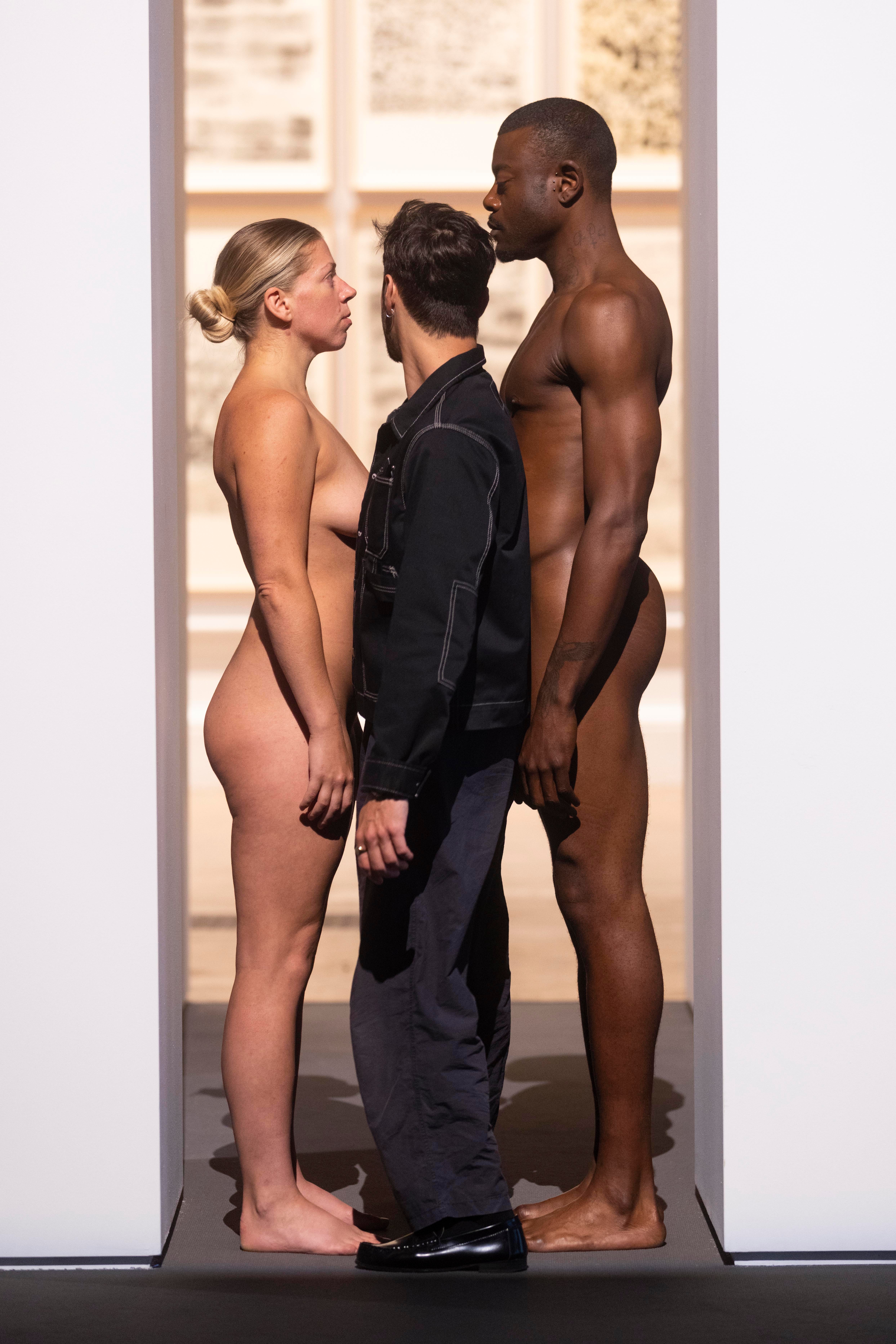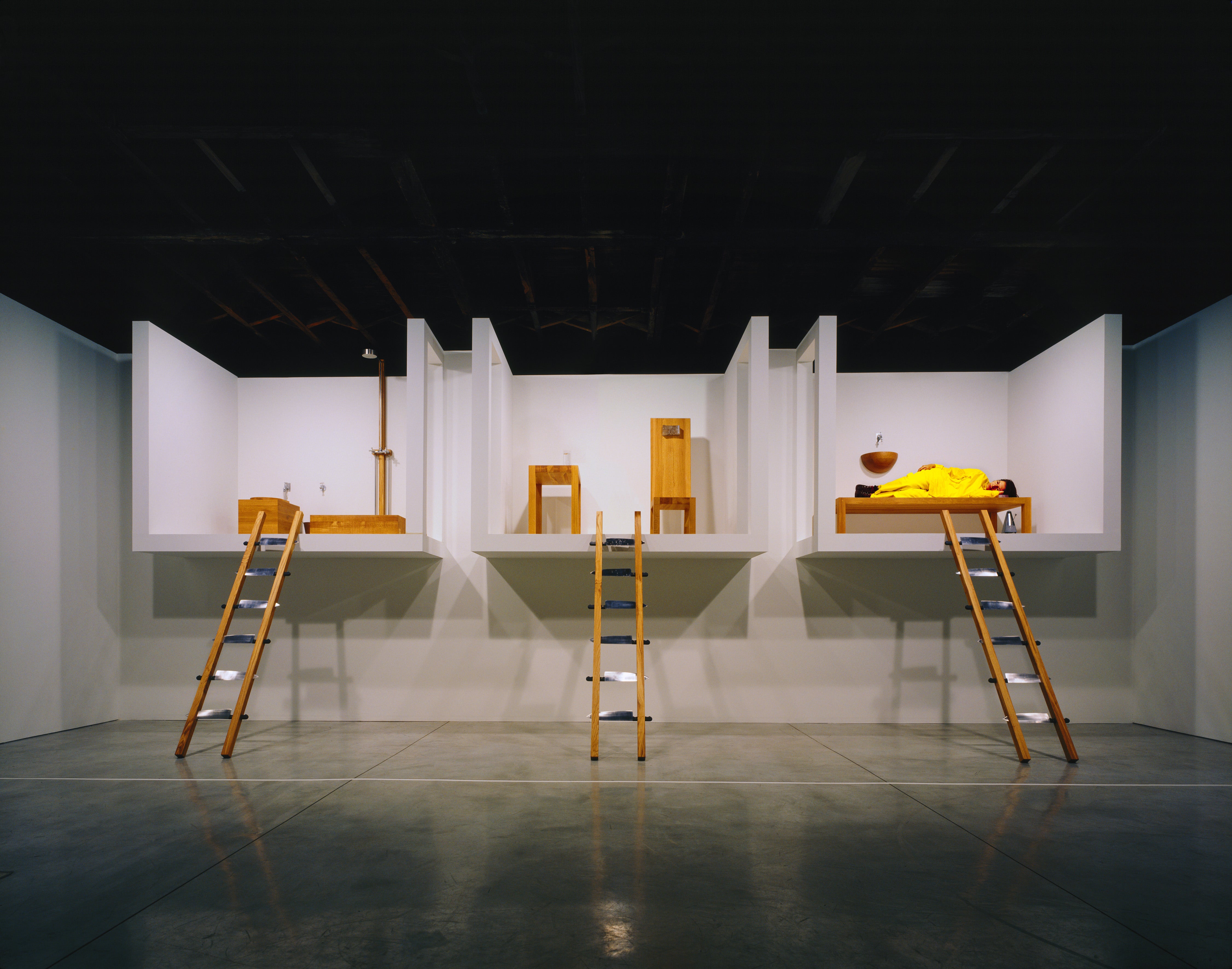Marina Abramović, Royal Academy review: world-famous artist’s early work electrifies in this once-in-a-lifetime show
Naked performers recreate a confrontational route into this display of the Serbian’s compelling and sometimes life-risking work

That the first woman to be accorded the honour of a solo exhibition in the Royal Academy’s vast main galleries should be a Serbian performance artist might on the face of it seem surprising. Marina Abramović, however, isn’t just any Serbian performance artist. Where previous artists seen in this space have tended towards alpha male mega-egos of the order of Antony Gormley, Anish Kapoor and Anselm Kiefer, Abramović can give any of them a run for their money in terms of self-belief and charisma.
The 77-year-old, now New York-based artist has literally risked her life, not just for her art, but in it, through asphyxiation, stray arrows and knives wielded by audience members – at her invitation – in performances that can go on for days. And she hasn’t been shy about telling the world about it. Indeed, I’ve long suspected that her global renown is down to an art media-generated personality cult as much as real artistic substance.
This huge show then is a once-in-a-lifetime opportunity to get a detailed overview view of Abramović’s art and assess her significance. It begins with images of her best-known work, The Artist is Present (2010), a three-month-long “durational” performance in which Abramović sat staring at members of the public facing her one-to-one across a desk at New York’s Museum of Modern Art. The volunteers’ faces are seen on one wall, with Abramović’s reactions shown opposite. While their expressions are filled with a mixture of shyness, hope and expectations, with a surprising number in tears, her features betray little more than blankness and exhaustion. But after weeks confined to a single chair gawping at strangers, what do you expect? The theoretical niceties behind the work – including the need to make the audience as much participants as the artist – barely register beside the fact of Abramović’s raw artistic stamina.
The problem of how to make a notoriously ephemeral medium such as performance art compelling in a large gallery is solved by blowing up vintage films and photographs to a large scale and recreating some of the objects used. A tableful of the 72 objects that Abramović invited audience members to use on her body “as desired” in her infamous 1974 performance Rhythm 0 – from a loaf of bread to a carpenter’s saw – is laid out beneath huge images of a bruised, battered and very young looking Abramović. Nearby a heap of cow bones stands in for the thousands of bloody bones she spent four days attempting to scrub clean in a performance at the 1997 Venice Biennale: a symbolic and knowingly futile attempt to “wash away” the shame of the horrific and then recent conflict in the former Yugoslavia.
Born in the Serbian capital Belgrade in 1946, Abramović was the granddaughter of an Orthodox Christian patriarch and the child of disciplinarian communist partisans who fought the Nazis and were given privileged positions under the post-war Tito regime. She seems to see herself as personally embodying the culture and contradictions of the former Yugoslavia, which she sees as “bound up with extremes of violence and eroticism”. All of which helps explain why she departed her homeland for Holland in 1976.
In her 2001 installation The Hero, she exhibits her father’s old photographs, medals and passbooks beneath a wall-filling image of herself astride a white horse carrying a white flag with a haunting rendition of the Yugoslavian national anthem playing in the background. My first impression on seeing Abramović’s self-personification as folkloric “hero” was that it is nothing like as ironic as she might want the viewer to think. Yet this feels the most personal and affecting work in the exhibition.
The voices of Abramović and her romantic partner and artistic collaborator from 1976 to 1988, the German artist Frank Uwe Laysiepen known as Ulay, reverberate through the galleries as they’re seen howling and screaming, kissing and slapping each other on huge screens. Imponderabilia, a 1977 performance in which the pair stood naked in the doorway of a New York gallery, forcing visitors to squeeze between them is recreated here with a couple of actual naked performers, one of three live performances taking place in the exhibition; an additional side door is provided for those not wanting contact with stark naked strangers.
The exhibition up to this point is quite electrifying. If Abramović’s enthusiasm for getting her kit off suggests a degree of compulsive exhibitionism, that simply comes with the territory. The point is we’re made to feel completely “present”, as Abramović would no doubt put it, in a period of wild experimentation where the cool of classic New York-style performance art meets a Balkan-flavoured emotional and symbolic intensity.

But as her work strays further from her formative cultural territory, and from performance towards more object-based art, it loses some of its fierceness and tension. The Lovers, The Great Wall Walk (1988), a 90-day “performance walk” with Ulay along the Great Wall of China, which was to have culminated in the couple’s marriage, led instead to their separation. The Sun and Moon (1987), two human-height black urns – one shiny representing the sun, one matt representing the moon – designed to embody why they could no longer work together, feels a touch obvious in its symbolism.
As Abramović travels the world in the succeeding large rooms, she moves from the frantic hyper-activity of her early performances towards a stillness and spiritual concentration rooted in Tibetan and Australian Aboriginal traditions. Yet attempts to utilise the elemental symbolic properties in physical materials in the manner of her great influence Joseph Beuys are only sporadically convincing. Reprogramming Levitation Principle (2000), two copper baths full of chamomile flowers, overhung by white crystals, smack of a slightly facile New Age mysticism. Portal (2022), a doorway standing in the middle of a gallery, framed by LED-lit white “crystals” that completely dazzle the viewer as they pass through it, makes a spectacular coup de theatre, though it stands at an elegant remove from its concept of transition between spiritual states. The sense of gritty, near-life-threatening personal involvement feels long gone.
More engaging are her Transitory Objects for Human Use (1990) that make the audience the “central participant in the work”. We’re instructed to press our “head, heart and sex” against pieces of polished crystal set in the gallery wall, to feel their beneficial effects, or don a pair of massive crystal shoes. Like all Abramović’s best work, they require the human presence. Those baths of chamomile flowers were designed to have people lying in them. It’s a shame gallery goers aren’t invited to strip off and oblige.

The show ends with a spectacular installation, The House with the Ocean View (2002), three starkly abstracted domestic environments – a bathroom, kitchen and bedroom – each accessed by a ladder with huge carving knives for rungs. Or it will be spectacular when it’s inhabited by one of the three women performers who will live in it in rotation, without speaking and drinking only water, for 12 days each, as Abramović herself did when the work was first exhibited.
This is the best performance art-related exhibition I’ve seen, by some distance. Abramović’s early performances still feel urgently compelling. You can feel in them the blow-back of historic trauma: the horrors of the Second World War, the conflicts of Communism and Christianity, authority and personal freedom. Her lifelong spiritual quest is similar in many ways to that of her hippy contemporaries in the West, but always with the sense that there’s vastly more at stake.
Marina Abramović at the Royal Academy in London runs from 23 September 2023 until 1 January 2024
Join our commenting forum
Join thought-provoking conversations, follow other Independent readers and see their replies
Comments


Bookmark popover
Removed from bookmarks